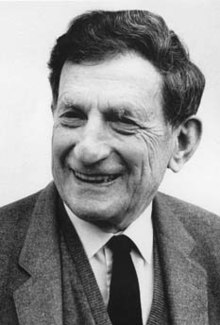Implicate and explicate order according to David Bohm
According to David Bohm’s theory, implicate and explicate orders are characterised by:
In the enfolded [or implicate] order, space and time are no longer the dominant factors determining the relationships of dependence or independence of different elements. Rather, an entirely different sort of basic connection of elements is possible, from which our ordinary notions of space and time, along with those of separately existent material particles, are abstracted as forms derived from the deeper order. These ordinary notions in fact appear in what is called the “explicate” or “unfolded” order, which is a special and distinguished form contained within the general totality of all the implicate orders (Bohm 1980, p. xv).

David Bohm’s challenges to some generally prevailing views
In proposing this new notion of order, David Bohm explicitly challenged a number of tenets that he believed are fundamental to much scientific work. Bohm challenges the ideas that:
-
That phenomena are reducible to fundamental particles and laws describing the behaviour of particles, or more generally to any static (i.e. unchanging) entities, whether separate events in space-time, quantum states, or static entities of some other nature.
-
Related to (1), that human knowledge is most fundamentally concerned with mathematical prediction of statistical aggregates of particles.
-
That an analysis or description of any aspect of reality (e.g. quantum theory, the speed of light) can be unlimited in its domain of relevance.
-
That the Cartesian coordinate system, or its extension to a curvilinear system, is the deepest conception of underlying order as a basis for analysis and description of the world.
-
That there is ultimately a sustainable distinction between reality and thought, and that there is a corresponding distinction between the observer and observed in an experiment or any other situation (other than a distinction between relatively separate entities valid in the sense of explicate order).
-
That it is, in principle, possible to formulate a final notion concerning the nature of reality; e.g. a Theory of Everything.

Bohm’s proposals have at times been dismissed largely on the basis of such tenets, without due consideration necessarily given to the fact that they had been challenged by Bohm.
Bohm’s paradigm is inherently antithetical to reductionism, in most forms, and accordingly can be regarded as a form of ontological holism. On this, Bohm noted of prevailing views among physicists: “the world is assumed to be constituted of a set of separately existent, indivisible and unchangeable ‘elementary particles’, which are the fundamental ‘building blocks’ of the entire universe … there seems to be an unshakable faith among physicists that either such particles, or some other kind yet to be discovered, will eventually make possible a complete and coherent explanation of everything” (Bohm 1980, p. 173).
The whole encompasses all things
In Bohm’s conception of order, then, primacy is given to the undivided whole, and the implicate order inherent within the whole, rather than to parts of the whole, such as particles, quantum states, and continua. For Bohm, the whole encompasses all things, structures, abstractions and processes, including processes that result in (relatively) stable structures as well as those that involve metamorphosis of structures or things. In this view, parts may be entities normally regarded as physical, such as atoms or subatomic particles, but they may also be abstract entities, such as quantum states. Whatever their nature and character, according to Bohm, these parts are considered in terms of the whole, and in such terms, they constitute relatively autonomous and independent “sub-totalities“. The implication of the view is, therefore, that nothing is fundamentally separate or autonomous.
Undivided Wholeness in Flowing Movement
Bohm 1980, p. 11 said: “The new form of insight can perhaps best be called Undivided Wholeness in Flowing Movement. This view implies that flow is, in some sense, prior to that of the ‘things’ that can be seen to form and dissolve in this flow“. According to Bohm, a vivid image of this sense of analysis of the whole is afforded by vortex structures in a flowing stream. Such vortices can be relatively stable patterns within a continuous flow, but such an analysis does not imply that the flow patterns have any sharp division, or that they are literally separate and independently existent entities; rather, they are most fundamentally undivided. Thus, according to Bohm’s view, the whole is in continuous flux, and hence is referred to as the holomovement (movement of the whole).
See also: